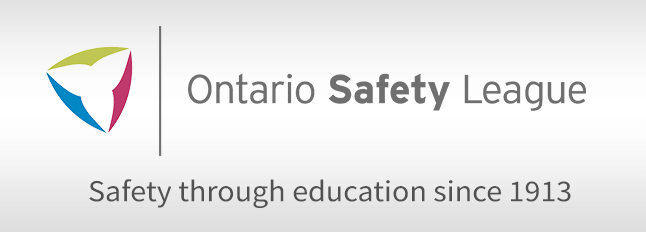WINTER DRIVING IN ONTARIO (October 2012 to March 2013)
A typical Winter Driving Survival kit
It’s good thing to keep a winter survival lit in your vehicle. Having essential supplies can provide some comfort and safety for you and you passengers should you become stranded.
- Ice scraper
- Snow brush
- Cell phone
- Traction aid, e.g. sand
- Shovel
- Tow rope/ chain
- Booster cables
- Road flares / warning lights
- Gas line antifreeze
- Flashlight & batteries
- First Aid Kit
- Small Tool Kit
- Extra clothing & footwear
- Blanket
- Non-perishable food
- Candle and small tin can
- Matches
If you get stuck or stranded, don’t panic. Stay with your vehicle for safety and warmth. Wait for help to arrive. Use your cell phone to call for help. Remember, dialing *OPP will connect you to the nearest Ontario Provincial Police communications centre.
Be careful if you have to get out of your vehicle whilst on the shoulder of a busy road. If possible use the door on side away from traffic. If you attempt to free your vehicle from the snow, be careful. Dress warmly, shovel slowly and do not over exert yourself. Do not attempt to shovel or push your vehicle if you have a medical condition. Body heat is retained when clothing is kept dry. Wet clothing due to the weather or perspiration, can lead to dangerous loss of body heat.
Draw attention to your vehicle. Use emergency flashers, flares or ‘Call Police’ sign. Run your motor sparingly. For fresh air, slightly open a window away from the wind. You might have to exit your vehicle occasionally to make sure the exhaust pipe is clear of drifting snow before running the engine.
PLAN AHEAD; BE PREPARED; DRIVE SAFE!
The 3 key issues to safe winter driving:
- Stay Alert
- Slow Down
- Stay in Control
Drive with consideration to current weather and road conditions. Keep a safe distance between you and the vehicle in front. Avoid situations where you may have to brake suddenly.
Make sure you get your vehicle ‘WINTEZRIZED’ before the cold snowy winter weather arrives; i.e. check your battery, belts & hoses, radiator, oil, lights, brakes, exhaust system, heater/ defroster, wipers, windshield washer fluid and ignition system.
Change to using ‘Winter Tires’ and make sure you check the pressure and condition. Winter Tires operate better at lower temperatures and provide better traction and shorter stopping distance. (They are NOT just for the snow).
If weather conditions are, or the forecast is for bad weather put off your trip. If you must make the trip then plan ahead. Plan your route, tell someone you’re travelling, your destination and approximate arrival time.
Wear comfortable clothing for driving and take along warm clothing for getting out of the vehicle.
Clear snow and ice from all windows, lights, mirrors and the roof. After starting your vehicle make sure you wait until all interior windows are clear of fog. Always travel with a minimum of half a tank of gas. Check your windshield washer fluid and that it is rated for -40c temperature. (keep an extra jug in the vehicle). Carry a cell phone with you.
ON THE ROAD! Get Winter Tires!!
Be Seen! Turn on your vehicle lights. It is important to see and be seen in low light, blowing snow and white out conditions.
Keep your distance! A guide to safe distancing under normal driving conditions is the ‘two-second’ rule. In winter, you should double the two-second rule, i.e. ‘four-second’ rule. It takes longer to stop on a slippery road, so it is very important to leave lots of space between you and the vehicle in front.
Learn how to brake and control skidding under slippery wet road conditions.

